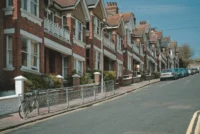- Home
- Articles
- Architectural Portfolio
- Architectral Presentation
- Inspirational Stories
- Architecture News
- Visualization
- BIM Industry
- Facade Design
- Parametric Design
- Career
- Landscape Architecture
- Construction
- Artificial Intelligence
- Sketching
- Design Softwares
- Diagrams
- Writing
- Architectural Tips
- Sustainability
- Courses
- Concept
- Technology
- History & Heritage
- Future of Architecture
- Guides & How-To
- Art & Culture
- Projects
- Interior Design
- Competitions
- Jobs
- Store
- Tools
- More
- Home
- Articles
- Architectural Portfolio
- Architectral Presentation
- Inspirational Stories
- Architecture News
- Visualization
- BIM Industry
- Facade Design
- Parametric Design
- Career
- Landscape Architecture
- Construction
- Artificial Intelligence
- Sketching
- Design Softwares
- Diagrams
- Writing
- Architectural Tips
- Sustainability
- Courses
- Concept
- Technology
- History & Heritage
- Future of Architecture
- Guides & How-To
- Art & Culture
- Projects
- Interior Design
- Competitions
- Jobs
- Store
- Tools
- More

In the bustling heart of urban landscapes, where space is at a premium and the demand for housing continues to soar, the design of residential spaces plays a crucial role in shaping both the quality of life for inhabitants and the economic feasibility of projects. Saving money in urban housing design is not just about cutting costs, but about intelligent, sustainable planning that balances affordability with functionality and aesthetics. As cities continue to grow and evolve, architects and developers are challenged to find innovative ways to create affordable yet livable spaces. This article explores various strategies and considerations in urban housing design that can lead to significant cost savings without compromising the quality of living.
Table of Contents
ToggleEfficient Use of Space
One of the primary strategies in cost-effective urban housing design is the efficient use of space. Compact living units, thoughtfully designed to maximize utility in a smaller footprint, can significantly reduce construction and land costs. Incorporating multi-functional spaces and built-in furniture can enhance the usability of small areas. Additionally, adopting a modular design approach where standardized units can be easily replicated or combined can lead to economies of scale in construction.
Sustainable Materials and Technologies
The use of sustainable materials and technologies is another key aspect of cost-saving in urban housing design. Eco-friendly materials such as recycled steel, bamboo, and precast concrete not only have a lower environmental impact but can also be more cost-effective in the long run. Incorporating energy-efficient technologies like solar panels, green roofs, and smart home systems can reduce long-term operational costs for residents. Sustainable design also attracts environmentally conscious buyers, potentially increasing the market value of the property.

Collaborative Design and Community Involvement
Engaging with the community and stakeholders in the design process can lead to more cost-effective and suitable housing solutions. Collaborative design approaches can identify the specific needs and preferences of future residents, leading to more efficient use of resources. Community involvement can also foster a sense of ownership and pride among residents, which can translate into better maintenance and sustainability of the housing units.
Innovative Construction Methods
Exploring innovative construction methods can significantly reduce costs in urban housing projects. Techniques like prefabrication and modular construction allow for much of the building work to be done off-site, reducing labor costs and construction time. These methods also offer the advantage of higher precision and quality control, potentially reducing future maintenance costs.

Regulatory and Policy Considerations
Navigating the regulatory landscape effectively is crucial in urban housing design. Understanding and leveraging zoning laws, tax incentives, and government subsidies for affordable housing projects can lead to substantial cost savings. Additionally, advocating for policy changes that support cost-effective urban housing can pave the way for more affordable housing solutions in the future.
In conclusion, the pursuit of cost-saving measures in urban housing design is a multifaceted and critical endeavor that goes far beyond mere budgetary constraints. It encompasses a broader vision of creating sustainable, functional, and inclusive urban living spaces. Efficient space utilization, the use of sustainable materials and technologies, community engagement, innovative construction methods, and strategic regulatory navigation are not just pathways to economic efficiency but also to vibrant, sustainable communities. This approach demands a balance between affordability and quality, ensuring that urban housing is not only accessible but also conducive to a high quality of life. As cities continue to grow, these strategies will play a crucial role in shaping the future of urban living, making it more sustainable, inclusive, and affordable.

Furthermore, this challenge presents an opportunity for innovation and creativity in the field of urban development. It calls for architects, planners, and developers to think outside the box, challenging traditional norms and exploring new possibilities. The implementation of these cost-saving strategies in urban housing design has the potential to transform cities into models of sustainable living, setting a precedent for future urban development worldwide. In essence, the journey towards creating cost-effective urban housing is an ongoing process that requires collaboration, commitment, and a forward-thinking mindset, ultimately contributing to the creation of thriving urban environments for current and future generations.

Submit your architectural projects
Follow these steps for submission your project. Submission FormLatest Posts
Understanding Site Safety Footwear in Architectural Practice
Architecture is often discussed through drawings, models, and finished buildings, yet a...
General Arrangement Drawings in Architecture: The Backbone of Clear Design Communication
General Arrangement Drawings explained: what they are, when to use them, how...
The Ultimate Guide to Fencing in North Dakota: Choosing the Best Fence for Your Property
Watching a chain link fence twist in 70 mph winds near Minot...
Gaudí: Where Architecture Meets Science
Gaudí: Where Architecture Meets Science shows catenary arches, ruled surfaces, and biomimicry...












Leave a comment